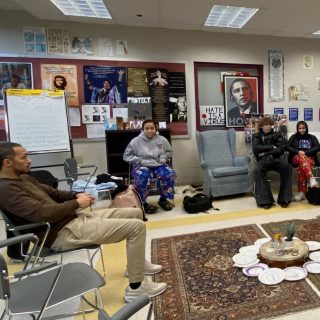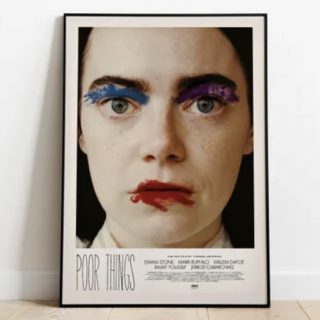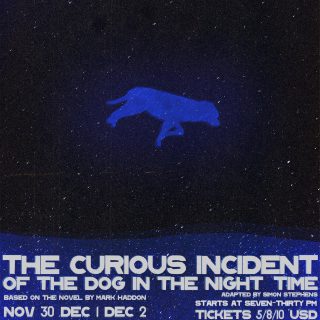‘Killers of the Flower Moon’: long, but educational and empathy-building

Blockbuster movies usually feature big names and are often meaningless action movies or feel-good dramas that end on a high note. Killers of the Flower Moon largely departs from that model. Even though it stars Leonardo DiCaprio and Robert DeNiro, it tells one of the most cruel moments in Native American history, in a long, drawn-out, dark narrative that ends with a sense of despair.
Coming into the movie, I had a very general understanding of the systemic violence towards Indigenous peoples throughout American history. It was clear that they had been brutally persecuted as colonists took their land, and Native Americans were subjected to segregation on reservations. But I did not know this particular story, which was both complex and somewhat surprising. By the end of the movie Martin Scorsese’s telling left me with a vivid image of some of the twisted cruelty that is left out of history books.
Scorsese, the director, starts off the bat with a close-up of him talking about the importance of the true story that is about to be told. He emphasizes that it was created with respect and in collaboration with the Osage tribe. This primed the viewer for the important and dense experience to come.
The movie takes place in the 1920s in Osage County, Oklahoma where the Osage tribe have accumulated extraordinary wealth through oil production located on their land, where they retained mineral rights. As they gain monetary wealth, the Indigenous people give up their traditions for the most part and take residence in fancy houses with ornate furniture, hiring white people as servants.
In my opinion, the plot of the movie was a bit of a mystery and unclear about which direction it was headed, given most audience members’ absence of prior knowledge of the real-life events. In the beginning, various characters such as Ernest Burkhart (Leonardo DiCaprio) and William Hale (Robert De Niro) are portrayed as honest men. As the story progresses their true intentions are slowly revealed, attempting to keep the viewer on the edge of their seat.
For example, Hale convinces Burkhart to marry Mollie, a full-blood Osage woman. At first, Hale comes off as a benevolent community member who respects and befriends the tribe. And Ernest appears to fall in love with Mollie.
But their marriage is not unique. Many Indigenous women married white men. And soon it becomes evident that it is all part of a big scandalous ploy to steal the Osages’ wealth. I wondered why the women would consent to these marriages. Some of them even stated that the white men just wanted their money.
Then a slew of dozens of murders occur. At first, they appear disconnected. Only through an FBI investigation, that Mollie prompts, does the tribe realize that the sinister goal was to steal the Osages’ wealth, through marriage and inheritance of headrights. The extreme cruelty toward individual members of the tribe is a reflection of the United States’s much more pervasive violence toward Indigenous people. I felt like it was a terrible and demoralizing story, but still not the worst of what happened to Indigenous people nationwide.
The acting was the best part of the movie. Leonardo Di Caprio’s performance was remarkably skilled as he portrayed his role as a somewhat dull and simple man. Whether it be his mannerisms or his busted teeth, he showed complete devotion to the role. However, while he showed his ability to be a shape-shifting actor, his obnoxiously fake Southern accent sometimes drew my attention away from the character.
On the other hand, I found that Lily Gladstone (Mollie Burkhart) nailed her role, shining as the best character. She played a quietly powerful Osage woman who continued to convey the values and virtues of the Osage nation, even as she lived in a typical house and married a white man.
And her plight was particularly challenging. Mollie suffered from diabetes, which often plagues Indigenous people. The doctors use this as an excuse to treat her with poison to silence her and stop her from drawing attention to the murders, as part of the grand scheme. I later learned that Gladstone is a Native woman herself, growing up on the Blackfeet reservation in Montana. I found myself thinking that her life experiences must have helped her play her role.
In interviews with the press after the movie, Gladstone shared support and offered counseling and mental health resources to Native viewers. She encouraged “Native Women & Youth” to watch the Martin Scorsese film “when and only if you feel ready, and see it with people you feel safe with.”
Although Killers of the FlowerMoon expressed talented acting and there was thoughtful directing by Scorsese, it was difficult to stay engaged through every twist and turn of the story. The three-and-a-half-hour run time paired with a painfully slow pace and lacked much music to underscore the drama. This made the watching experience require a lot of mental stamina to stay focused on the plot. On a few occasions, I saw my mother, who joined me to watch the film, checking her phone to see how much time remained.
Despite the apparent shortcomings in keeping the viewer engaged, Killers of the Flower Moon has raked in just over one hundred million dollars in worldwide sales, becoming only the ninth of Scorsese’s movies to pass the one hundred million milestone.
While some people may feel like at least an hour of the 3.5-hour movie could be cut, as I left the theater, I felt like I gained something. Gaining understanding and empathy for an overlooked and important part of history is transformative. Education through a masterful motion picture was, in fact, Scorsese’s intent.














